NIL
Rossini aims for exponential growth in transitional year for college sports
May 2024 marked a brand new chapter in the history of Arizona State athletics, with the hiring of alumnus Graham Rossini as the university’s newest athletic director following the departure of Ray Anderson, who served in that capacity for roughly a decade.
Year one brought a whirlwind of unanticipated success for Sun Devil athletics as the school transitioned from its former home in the Pac-12 Conference to the Big 12 Conference in the vast majority of its sports. Despite this significant period of change, many Sun Devil programs saw significant success over the last nine months, winning four conference championships (football, volleyball, men’s, and women’s swimming).
On Thursday morning, Rossini held a press conference, which, among other topics, reviewed the first full sports year for ASU in their new conference.
“26 sports, 15 of them finished in the top 25,” Rossini noted in his opening remarks. “This last year, we had 10 combined first or second-place conference finishes, four Big 12 championships, which led the Big 12, and four Big 12 runners-up as well.
“I think the nation has started to really understand what we’re capable of accomplishing at Arizona State University. We want to win, we talk about Operation: Rings and Banners all the time, we want to compete at the highest level.”
Rossini credits a large portion of the success of the 2024–25 athletic year to the connectivity of the coaching staff across the department that has worked amongst themselves to foster growth at ASU. Rossini noted that the university coaching tree at ASU feels more intertwined now than it did back in May 2024.
“We no longer have these 26 sports that operate largely like independent contractors,” Rossini noted. “They’re connected, they’re collaborating, they’re pushing each other in ways that are healthy and competitive.”
With the additional success comes added fandom and excitement in the Valley toward Sun Devil football. Much of Rossini’s remarks looking ahead to the 2025–26 athletic year were related to the boom of popularity and resources ASU has earned heading into the fall, starting with football, as the ASU craze has made Tempe the new hotspot for Saturday afternoons in the Phoenix metropolitan.
“Seven thousand new season tickets for next football season as of today,” Rossini stated. “We expect to exceed 7,500 new season tickets by the start of the season. That puts us at the most total season tickets in well over a decade.”
As the rapidly changing environment of collegiate athletics continues, the Sun Devils feel comfortable in their foundation to this point. Revenue for the university has seen exponential growth starting in August 2023, when Sun Devil Stadium, the home of ASU football, agreed to a naming rights deal with Mountain America Credit Union worth over $50 million at the time.
“I think it’s still the largest investment in college football history. That really started our evolution of building out a better business within Sun Devil Athletics,” Rossini remarked. “That’s continued with the partnerships that we’ve started to create. We have a number of new partners coming in at seven-figure levels, really focused on ticket selling and fundraising.”
As money flows through the veins of college athletics, changes in NCAA rules, regulations, and guidelines for NIL and other compensation for college athletes continue. The summer of 2025 is no different than many in years past, as the NCAA settles on new financial decisions meant to aid in monetary regulation.
This time around, the NCAA has settled upon a maximum of $20.5 million that each university can supply in revenue sharing for its student-athletes. This decision is based on the percentage of the school’s commercial-driven revenue through athletics. Due to the fact that Arizona State is expanding its number of scholarship athletes across its sports to meet the max numbers, it will actually have roughly $18 million this year to distribute in revenue share funds to all of its scholarship student-athletes. This figure is expected to increase by 4% annually to keep pace with rising living costs.
It is essential to note that this is not a salary cap on the amount a collegiate athlete can receive through NIL contracts. However, it does impose a restriction on the amount of money that can be received directly from the university. For Rossini, this was an anticipated step in the direction of college athlete compensation, as the NCAA continues to look for a permanent solution to the chaos surrounding name, image, and likeness (NIL).
“I think the overall benefit is that there are steps toward uniform guidelines,” Rossini commented. “And at least in terms of rev share and NIL and roster caps, we understand that environment. I think we’ve got a long way to go as an industry in terms of officiating and some of the sport-specific rules that need to be unified at a Division I level or an NCAA level. I don’t think each conference should have different interpretations of competitive rules. I think we need to really focus on balancing out that landscape.”
The balance of the landscape is set for now, but the NCAA doesn’t regulate where each school spends its annual revenue share funds. Proposed distribution models across the country for colleges that have a football program suggest that roughly 75% of the annual revenue share funds will be allocated to football. The majority of the remaining 25% will be allocated to men’s basketball, with the remaining funds distributed to the rest of the collegiate athletes at any given university.
Ultimately, Rossini stayed far away from floating numbers or percentage points on Thursday, and no figures were implied on how much ASU will spend per program. The monetary structure is centered on scholarship growth while unifying the athletic department and all 600 student-athletes at Arizona State, ensuring they are adequately compensated.
“We’ll be spending off about $18 million on the rev share,” Rossini said. “So, the available dollars are $20.5 million. If you follow the documents, there are two separate deduct categories. There’s up to $2.5 million in additional scholarship. We’ve blown beyond that number, adding 200-plus, so we hit that threshold no problem.
“We are discontinuing the Alston program (education-related financial awards provided directly by universities for academic-related expenses) that we’ve had for the last three or four years, which allows us to maintain $18 million going into rev share. Again, our scholarship investment is significant, but we’re convinced that it’s the right way to put our dollars into our department.”
Rossini’s long-term vision for the athletic department differs from that of the majority of Power Four programs. Fourteen of ASU’s 26 athletic programs are women’s sports, and the school is focused on building a culture that uplifts every team in the athletic department.
It was announced in May 2025 that multiple Division I universities, including UTEP and Cal Poly, would be dropping women’s tennis, along with swimming and diving. In the Valley, Grand Canyon’s men’s volleyball team is also on the chopping block, with monetary reasoning at the forefront of the unprecedented waters that athletic departments now have to navigate.
Arizona State’s 26 sports tops all Big 12 teams, and the conference has only two other teams exceeding 20 sports (Arizona at 22 and TCU at 21). It’s possible that this new college sports landscape could ultimately force some schools in this league to go through a program attrition process, yet that does not appear to be an even remote possibility in Tempe.
“We’ve added scholarships to all 26 (sports),” Rossini proudly stated. “There are a lot of schools that are maybe incrementally adding a small number or pulling scholarships out of sports, giving them to football to go from 85 to 105, or giving these two extra men’s basketball scholarships. I’d be nervous if I were at that school. If I’m a sport that’s not a big revenue driver and it is a cost center, you better have some incremental value to the university. So, we’re looking at ways to just resource our programs.
“There’s a pathway where eventually every athlete at ASU could be on some form of athletic aid. And we’ve added operational budget to all 26 sports. So, we’re continuing to invest in all 26. This isn’t an isolation around football and men’s basketball. They’re certainly heavily involved in the rev share distribution, but all 26 have a place at the university, and we really try to be as diligent and aggressive in resourcing all of them as best we can.”
Every NIL deal an ASU student-athlete earns will need to be approved by the university before it can become official—a process that is already in place but with slight variations for future use.
“Our athletes are used to disclosing their NIL deals,” Rossini remarked. “There have been different tools that we’ve used for that, but we’ve always encouraged that. It’s been part of our process. Where it benefits moving forward is the new NIL Go (a Deloitte-run clearinghouse) process that we’ll be using. Deloitte is involved in managing that. And again, a lot of people are maybe skeptical about the reality of holding up to these new guidelines.”
Deloitte’s NIL Go system is becoming the newest standard in NIL structure. The accounting giant launched the program on June 11, 2025, and numerous Division I programs will use it entering the new athletic cycle. It requires all students to submit NIL deals worth $600 or more for review by a third party, in order to streamline the regulatory process.
An ASU athlete who will likely utilize NIL Go frequently is Sun Devil quarterback Sam Leavitt. The redshirt sophomore enters his second year in Tempe as a player in the upper echelon of collegiate quarterbacks, with Heisman Trophy potential being floated by analysts. Perhaps more remarkable than his playmaking on the field is his selflessness off it. While other universities tangle in bidding wars for their star signal-callers, Leavitt donated his 2024 season earnings back to the Sun Angel NIL Collective, along with $15,000 donation to the Pat Tillman Foundation.
At the head of Rossini’s vision for ASU athletics is a team leader such as Leavitt who is willing, able, and excited to replant fruitful seeds in the program for others to benefit from.
“I love the kids who are in our department. Sam Leavitt is really taking on massive leadership at ASU, not just for football, but for all of ASU,” Rossini said. “I think when you see a check like this where he’s donating his NIL money back to the Pat Tillman Foundation, it just tells me that they understand the legacy of our institution. They understand what it’s like to be a Sun Devil. They understand the spirit of giving back, and that’s what NIL is for.
“I think college has historically been very selfish. It’s ‘help us because we’re inefficient at running the industry ourselves. We need a handout for people to come and give us resources.’ We want to give that back. We want to build a better business, but we want to be very community-oriented, where we’re affecting causes that are important in the Valley.”
ASU’s 2024 football campaign is forever ingrained in the history of Sun Devil football, finishing with the second-highest win total in program history. However, Thursday marked an incredible day for the team that still holds the all-time record. Led by legendary head coach Frank Kush, the 1975 ASU football team finished the season 12–0, culminating in a Fiesta Bowl victory over Nebraska, marking the only undefeated season in school history.
It was announced Thursday that the 1975 team would be inducted into the Sun Devil Athletics Hall of Fame, 50 years removed from its unforgettable run.
“We knew that this 50th anniversary was significant, and they’re going to be a member of the Hall of Fame class this fall, which is also the 50th anniversary of the Sun Devil Athletics Hall of Fame,” Rossini noted. “So, we only have two other teams that have ever been inducted into the Hall of Fame. The ’75 football team will be the first football team, and it very well deserves to come in.”
NIL
Miami WR Malachi Toney Announces Career News Amid College Football Season
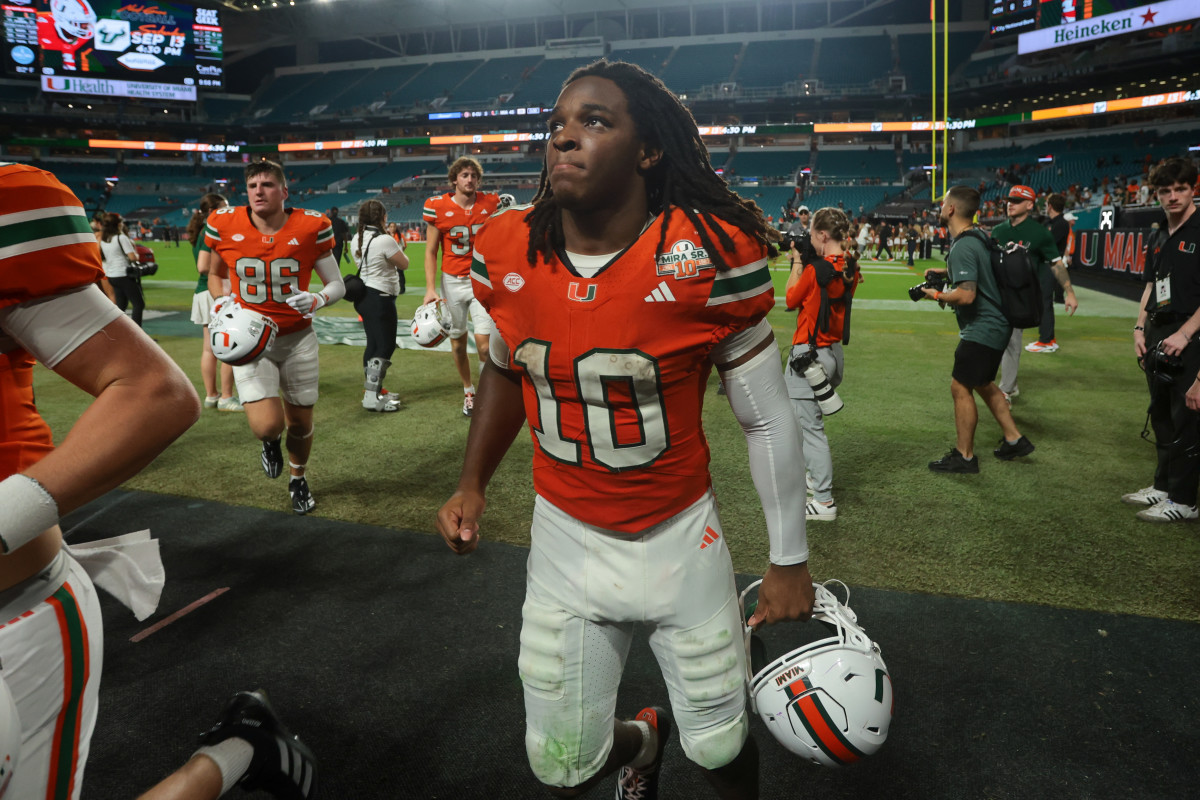
The No. 10 seed Miami Hurricanes defeated the No. 7 Texas A&M Aggies 10-3 in the first round of the College Football Playoff. It was a defensive battle, ultimately decided by a late fourth-quarter score and red-zone interception by Miami.
With the score tied at 3 and 1 minute, 44 seconds left in the game, Hurricanes wide receiver Malachi Toney scored on an 11-yard touchdown pass thrown by quarterback Carson Beck.
Advertisement
Up next for the Hurricanes is a Goodyear Cotton Bowl Classic matchup against the No. 2 Ohio State Buckeyes. It’s an uphill battle, as ESPN’s matchup predictor gives the Hurricanes a 29.5% chance of winning.

Miami Hurricanes wide receiver Malachi Toney (10).© Robert Myers-Imagn Images
Before his heroic performance, though, the wide receiver revealed an exciting Name, Image and Likeness (NIL) update. In a joint Instagram post, Toney revealed a new NIL partnership with Hellstar, a popular clothing brand that has a sports training component.
Advertisement
“We are so proud to announce our first Hellstar Sports College Athlete NIL signing – Malachi Toney🌟.,” the post caption read. “We had the privilege to coach @malitoney10 while he was apart of our high school 7 on 7 program, so now seeing him shine on the collegiate level we couldn’t be more proud.”
Toney’s On3 NIL valuation of $878,000 is the 12th-highest among college football wide receivers. Among players on Miami, it’s the fourth-highest, behind quarterback Carson Beck ($3.1 million), EDGE Rueben Bain Jr. ($1.2 million) and offensive tackle Francis Mauigoa ($1.1 million).
Advertisement
Through 14 games, Toney has been a major contributor to Miami’s success. He leads the team in receptions (89), yards (992) and touchdowns (eight).
With an exciting NIL opportunity under his belt, he and Miami look to stay hot against Ohio State. Kickoff is Dec. 31 at 7:30 p.m. ET at AT&T Stadium, airing on ESPN and streaming on the ESPN app.
Related: Texas Receives Clear Message From Nation’s No. 2 WR Amid Intense Recruiting Battle
This story was originally published by Athlon Sports on Dec 21, 2025, where it first appeared in the College Football section. Add Athlon Sports as a Preferred Source by clicking here.
NIL
What Colorado’s Athletic Department Valuation Says About Buffaloes’ Growth
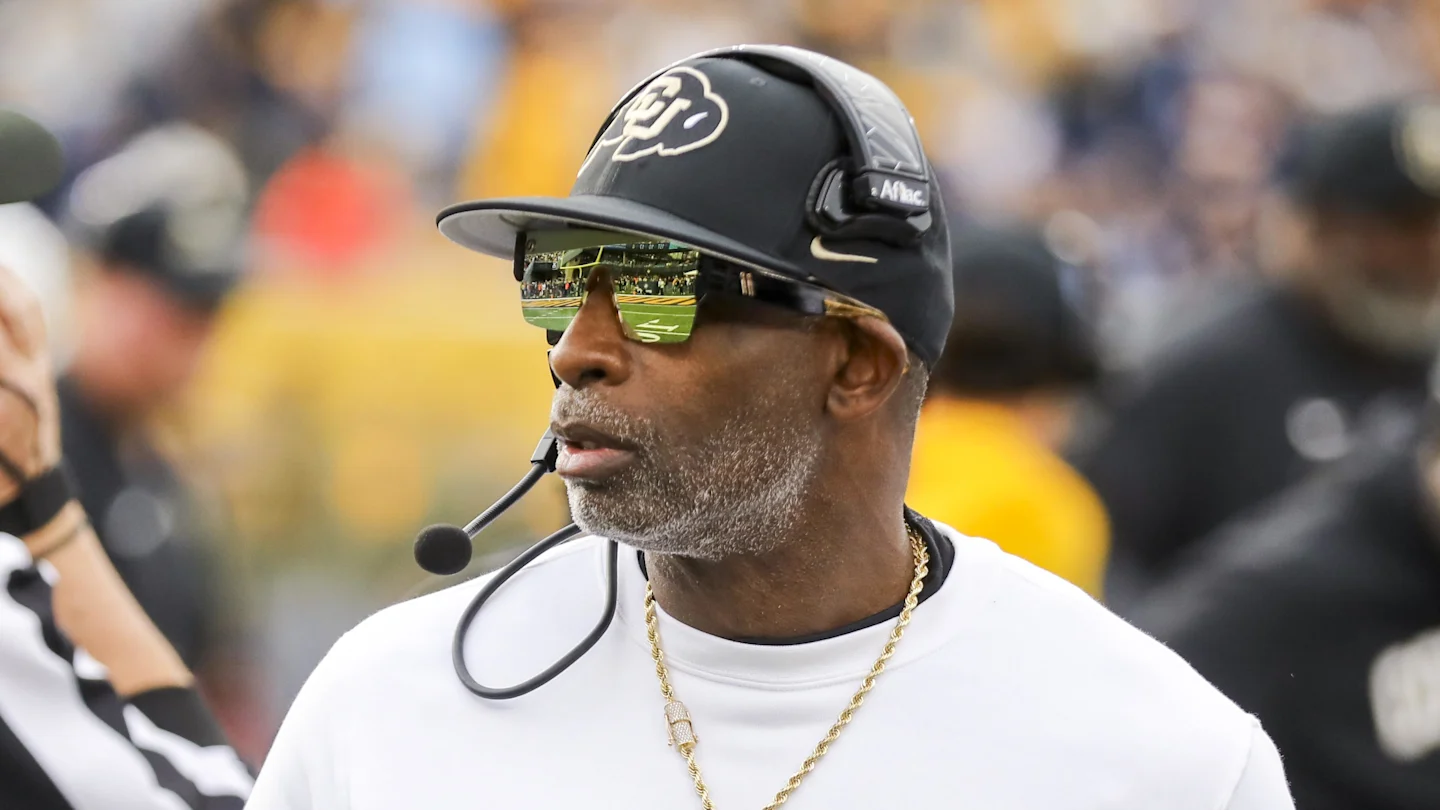
In the growing landscape of college athletics, Name, Image, and Likeness (NIL) deals play a vital role in sports. Some programs are set up better than others based on a program’s valuation. Programs with higher valuations can help some of the top-performing teams stay successful.
CNBC released its valuation rankings for the country’s athletic departments, showing their growth from the 2024 fiscal year. The Colorado Buffaloes are ranked No. 47 in the nation, a rise from No. 55 in 2024.

Breaking Down Colorado Buffaloes’ Valuation Ranking
Colorado’s 2025 valuation is $574 million, with a year-over-year value change of 22 percent. The program’s 2024 revenue is set at $147 million, with a 16 percent year-over-year revenue change.
A program’s valuation determines its monetary worth, and it is important to look at the growth, which shows that Colorado is trending in the right direction. It is also important to note that the valuation rankings are based on all of the athletics, not just the football program.
Where Colorado Ranks In The Big 12

When focusing on the Big 12 conference, several of the programs are in the same vicinity with their valuation ranking.
- No. 39 Kansas: $620M
- No. 41 Oklahoma State: $600M
- No. 42 Baylor: $585M
- No. 46 Iowa State: $575M
- No. 47 Colorado: $574M
- No. 49 Texas Tech: $570M
- No. 50 TCU: $568M
- No. 55 Arizona: $529M
- No. 57 BYU: $500M
- No. 58 West Virginia: $481M
- No. 60 Utah: $451M
- No. 62 Kansas State: $435M
- No. 63 Arizona State: $430M
- No. 68 Cincinnati: $280M
- No. 70 UCF: $262M
- No. 73 Houston: $222M
MORE: Colorado Gets Hit With Biggest Transfer Portal Loss Yet
MORE: Michael Irvin Gets Real On Blame Surrounding Shedeur Sanders
MORE: Deion Sanders Faces Recruiting Problem After Omarion Miller Transfer News
SIGN UP FOR OUR NEWSLETTER HERE
While from the top valuation of Kansas to the bottom, which is Houston is a significant difference in the Big 12, the conference teams are still in a similar vicinity overall. With it having to do with all athletics, the programs that have consistently strong teams, such as Kansas’ basketball team, make sense to have a higher valuation.

Looking at the Big 12 as a whole shows that the Colorado Buffaloes are in the top five for their valuation and trending upward.
Calling Back To Deion Sanders’ Comments On Fairness
While valuation is not the same as revenue, seeing the difference in the conferences does call back to Colorado coach Deion Sanders’ comments on the fairness between programs. The schools in the top five for their valuation are either in the Big Ten or the SEC, and all are in the billions.
“You talk about equality,” Sanders said during the Big 12 media day. “All you have to do is look at the playoffs and see what those teams spent, and you understand darn near why they’re in the playoffs. It’s kind of hard to compete with somebody who’s giving $25, $30 million to a darn freshman class.”

Although the valuation is on the programs’ overall athletics, Sanders has been outspoken about money when it comes to building the football program. With the Buffaloes facing a mass exodus through the transfer portal, Sanders has highlighted that several players are leaving because of money.
The positive side is that the Buffaloes’ valuation is growing with a 22 percent increase. This shows that the school’s athletics overall are being valued higher, and will help lead to more money poured into the program. With more money, the Buffaloes can put more of an emphasis on NIL as they look to build their roster and compete in the Big 12.
RECOMMENDED ARTICLES
NIL
Insider Reveals Biggest Reason Behind Colorado’s Transfer Portal Mass Exodus
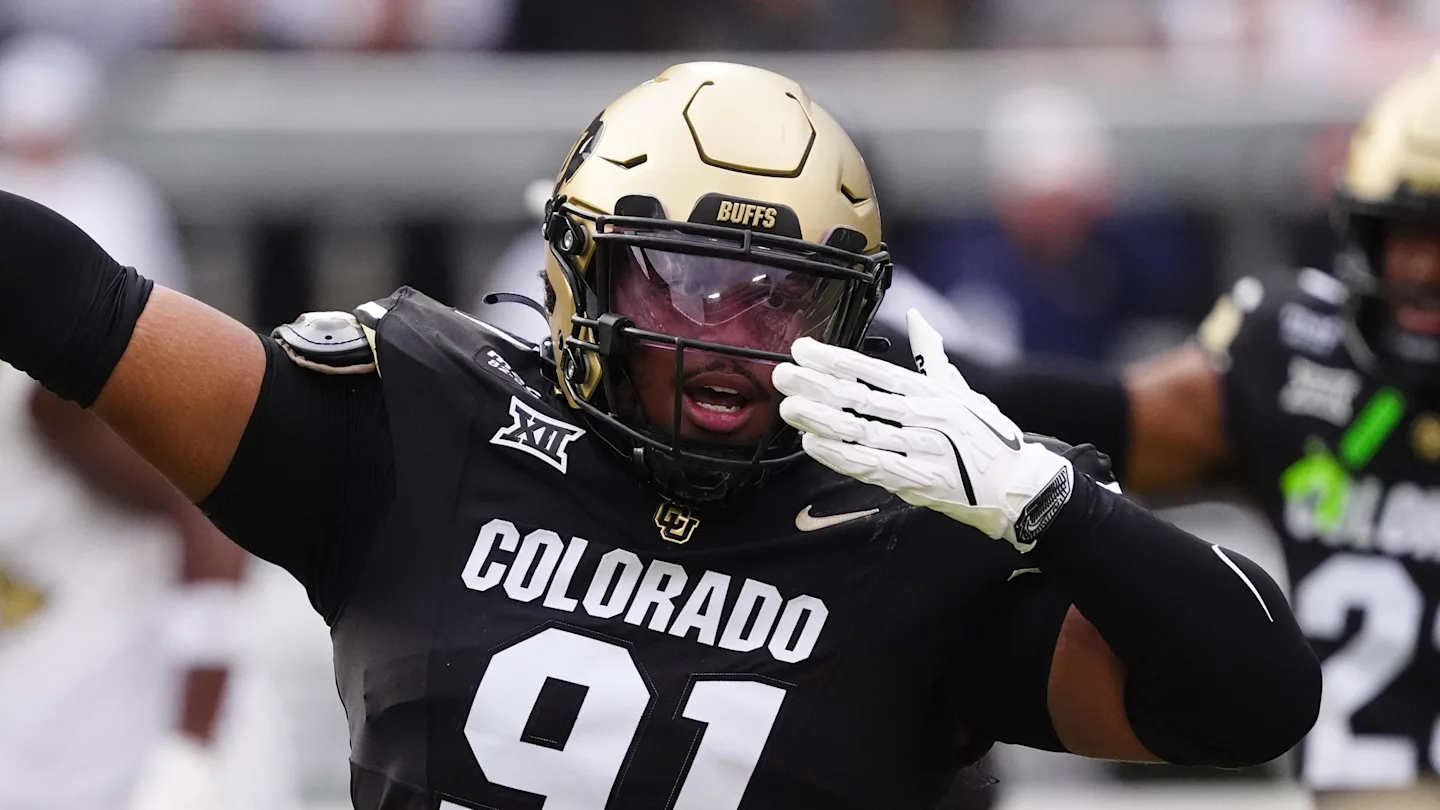
From a player retention standpoint, the first few weeks of the offseason haven’t been kind to the Colorado Buffaloes.
Several key Buffs have announced their intentions to enter the college football transfer portal when it opens next month, including wide receiver Omarion Miller, safety Tawfiq Byard and freshman defensive end Alexander McPherson. While every situation is unique, one Colorado insider believes money has been a common denominator among players’ reasons for leaving Boulder.

“The super majority of those people, I’m talking 95 percent, are going to be leaving for a bigger bag,” Thee Pregame Show’s Uncle Neely said on his YouTube channel. “This ain’t transferring in 1990. This ain’t transferring in the year 2000. This is 2025. This is business now. This isn’t, ‘Oh, I don’t like the coach. Oh, I don’t want to be treated the way they treat me.’
“This doesn’t mean something is wrong. These are business decisions now. But what we like to do is run with the narrative that woe is me, something must be wrong, something must be going on. How are all these people leaving?”

The NIL (name, image and likeness) era has rocked college football, and the depressing truth is that schools with more money will ultimately land the best players. In the Big 12, no school better exemplifies that trend than new conference champion Texas Tech.
Who’s Leaving Colorado?

As of Sunday, 16 Colorado players will enter the transfer portal next month. That group includes 12 defensive players, six members of the Buffs’ 2025 high school signing class and a few other Buffs who spent only one season in Boulder.
Below is an updated list of Colorado players who plan on entering the transfer portal:
- Safety TJ Branch
- Defensive lineman Jehiem Oatis
- Cornerback Noah King
- Cornerback Teon Parks
- Linebacker Mantrez Walker
- Safety Terrance Love
- Safety Tawfiq Byard
- Wide receiver Omarion Miller
- Defensive tackle Brandon Davis-Swain
- Offensive lineman Carde Smith
- Defensive end Alexander McPherson
- Offensive lineman Tyler Brown
- Defensive tackle Gavriel Lightfoot
- Defensive tackle Christian Hudson
- Defensive tackle Tawfiq Thomas
- Wide receiver Dre’lon Miller

Uncle Neely shared his take that Colorado’s losses should be replaceable via the transfer portal.
“Have you ever stopped to say, what am I actually losing by those people leaving?” Uncle Neely said. “Have you ever looked at the numbers production-wise of who has announced that they’re getting up out of here and what you’re actually losing by them leaving?… Is it replaceable via the portal? And in this business in college football, is it replaceable cheaper? I would wager to say the answer is yes in all regards.”
MORE: Colorado Gets Hit With Biggest Transfer Portal Loss Yet
MORE: Michael Irvin Gets Real On Blame Surrounding Shedeur Sanders
MORE: Deion Sanders Faces Recruiting Problem After Omarion Miller Transfer News
SIGN UP FOR OUR NEWSLETTER HERE

The college football transfer portal will open on Jan. 2 and close Jan. 16. Colorado coach Deion Sanders and his staff can begin adding players from the portal at the start of that period.
NIL
Report: LSU finalizes deal to hire Ole Miss’ Kevin Smith, puts him among highest paid RBs coaches
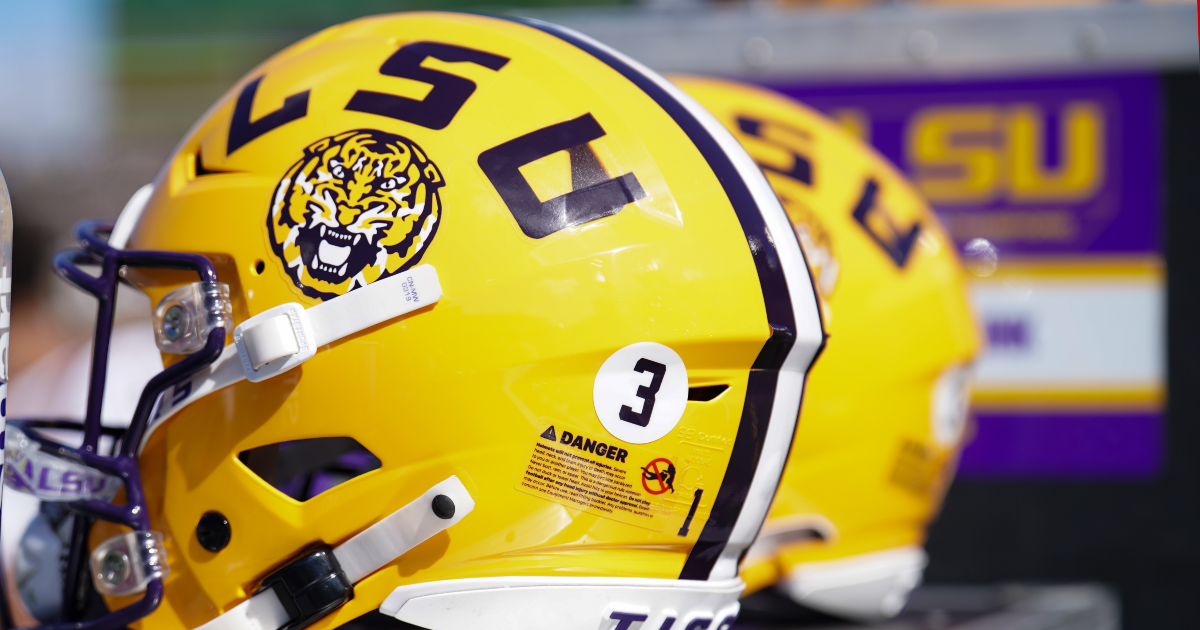
Lane Kiffin is bringing another Ole Miss assistant with him to LSU. According to Matt Zenitz of CBS Sports, the Tigers have finalized a deal to hire Rebels running backs coach Kevin Smith for the same role.
Smith is reported to have a salary of close to $1 million, which would make him one of the highest-paid running backs coaches in the country. He is the sixth Ole Miss assistant to follow Kiffin to Baton Rouge.
The other coaches joining Kiffin at LSU are offensive coordinator Charlie Weis Jr., tight ends coach Joe Cox, receivers coach Joe McDonald, inside receivers coach Sawyer Jordan and quarterbacks coach Dane Stevens. So far no defensive assistants from the Rebels have made the jump to Baton Rouge.
Smith worked with Kiffin as a running backs coach at Florida Atlantic form 2017-19 and joined his very first staff at Ole Miss in 2020. He stayed for the next two seasons in Oxford before leaving to take the running backs coach position at Miami in 2022.
Smith’s stint with the Hurricanes was a short-lived one as he returned to Ole Miss in 2023 and stayed through this season. Now he’ll look to continue the success he has enjoyed with Kiffin while building up the running backs room at LSU.
Smith helped to develop running backs such as Quinshon Judkins and Kewan Lacy during his time in Oxford. This past season, Ole Miss ranked fifth in the SEC with 185.6 rushing yards per game as Lacy led the conference with 21 rushing touchdowns and ranked second with 1,366 yards.
Ole Miss had its best season in program history this year to reach the College Football Playoff for the first time. However, Kiffin was not granted permission from the school to finish out the season with the Rebels after he accepted the LSU job.
Other assistants, including offensive coordinator Charlie Weis Jr., were allowed to complete the playoff run with Ole Miss. The Rebels defeated Tulane in the first round and will face No. 3 Georgia, which they lost to earlier this season, in the quarterfinals.
As of right now, it looks like most of the Ole Miss offensive staff will follow Kiffin to Baton Rouge. The defensive side keep defensive coordinator Blake Baker, who has been on staff at LSU since 2024.
NIL
Former 4-star QB announces plans to enter college football transfer portal
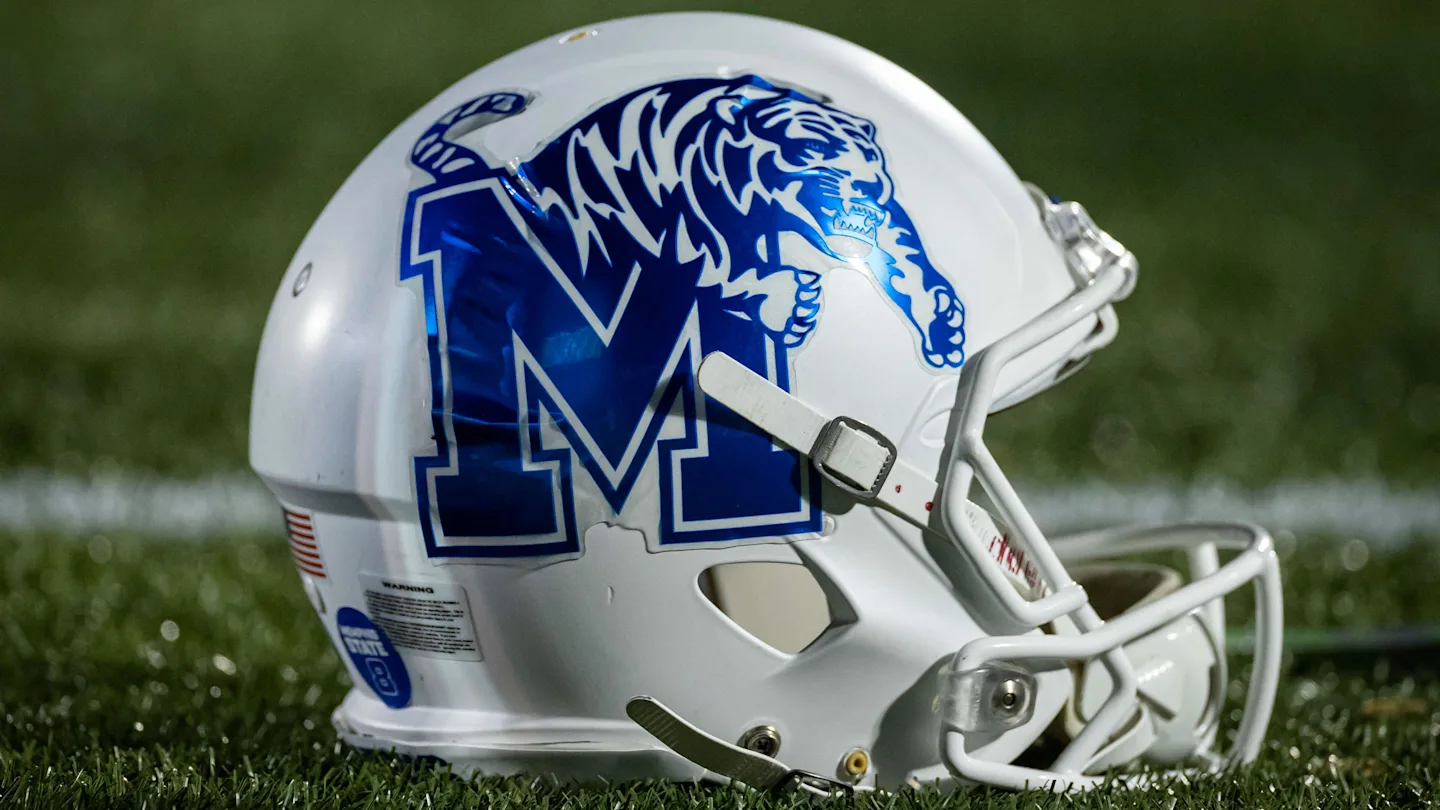
The quarterback market is expected to be extremely competitive this offseason.
A ton of experienced signal-callers have announced their decisions to enter the NCAA Transfer Portal, including Arizona State’s Sam Leavitt, North Texas’ Drew Mestemaker, Cincinnati’s Brendan Sorsby, and TCU’s Josh Hoover, among countless others.
The right move can benefit young quarterbacks, as players such as USC’s Jayden Maiava and Oregon’s Dante Moore benefited from transferring early in their careers.
An offseason coaching change has led one former blue-chip recruit to explore his options in the portal.
Former Four-Star Quarterback Expected To Enter Portal
On Sunday, Memphis true freshman quarterback Antwann “AJ” Hill announced his plans to leave the program after one season, per On3.
Hill appeared in two games in 2025, earning a redshirt. His most extensive action came in a 31-24 loss to UAB on October 18. Hill entered the contest after starting quarterback Brendon Lewis went down with an injury. In roughly two quarters of action, he completed 13/25 passes for 176 yards with 1 touchdown and 1 interception.
On the season, Hill connected on 19/32 passes for 223 yards with 1 touchdown to 1 interception.
Hill is transferring after Memphis head coach Ryan Silverfield was hired away by Arkansas. The Razorbacks don’t have a ton of depth at quarterback. Redshirt freshman KJ Jackson holds the most experience on the roster with five appearances and one start last season.
It wouldn’t be a surprise if Arkansas is involved in Hill’s transfer recruitment.
Hill was one of the highest-ranked prospects in program history to sign with Memphis. He was regarded as the No. 15 QB and a top-200 recruit in the 2025 class. Hill chose the Tigers over Florida following official visits to both schools.
During his prep career at Houston County High School, Hill compiled over 11,000 passing yards and led his team to at least one playoff victory in all three seasons as a starter.
Overall, Hill completed 800-of-1239 passes for 11,020 yards with 123 touchdowns to 20 interceptions. He added six more scores on the ground.
The 6-foot-4, 215-pound quarterback is expected to have four seasons of eligibility remaining.
Read more on College Football HQ
• $45 million college football head coach reportedly offers Lane Kiffin unexpected role
• Paul Finebaum believes one SEC school is sticking by an ‘average’ head coach
• SEC football coach predicts major change after missing College Football Playoff
• Predicting landing spots for the Top 5 college football transfers (Dec. 17)
NIL
Former Carolina wide receiver set for WWE main roster debut

Former South Carolina wide receiver Matrick Belton is reportedly going to get a real shot on the main roster in the WWE. Belton, who goes by Trick Williams in the top professional wrestling and sports entertainment company, joined WWE in 2021 in the NXT brand. Now, he’s going to move up to either the Raw or Smackdown roster.
NXT is basically the developmental arm of WWE while Raw and Smackdown – shows on Mondays and Fridays, respectively – are considered the main roster. According to this report from PWInsider.com, Belton will make an appearance on the upcoming Smackdown, which was pre-taped.
Whether Belton moves to Raw or Smackdown is to be determined. Here’s the reporting from PWInsider:
Former WWE NXT and TNA Champion Trick Williams will debut on Smackdown on 12/26 with the storyline being he’s a free agent looking to sign with the brand. We are told Williams has not been officially listed internally on a brand yet, so he could appear on Raw in the upcoming weeks as well, but he’ll be moving to the main roster in 2026.
Belton is a two-time NXT champion and also held the TNA World Championship for 140 days earlier this year. Belton, a former SEC football player who was in the Philadelphia Eagles’ minicamp in 2018, recently got engaged to another former SEC athlete – women’s basketball player Anriel Howard, who played for three years at Texas A&M and her final year at Mississippi State.
Belton, a Columbia native who played for Keenan High School, joined the program in 2014 after spending his first two years out of high school at Hampton University. After sitting out due to NCAA transfer rules, Belton played in every game for South Carolina in 2015 and made five starts. He caught 11 passes for 121 yards his first season on the field.
As a senior in 2016, he played primarily on special teams, appearing in nine games. He played in 21 games over the course of his two-year career with the Gamecocks and made five starts.
Belton also spent time in training camp with Philadelphia Eagles. However, he decided to take a chance on pro wrestling and started training at the Combat Zone Wrestling Academy in New Jersey.
-

 Motorsports2 weeks ago
Motorsports2 weeks agoSoundGear Named Entitlement Sponsor of Spears CARS Tour Southwest Opener
-

 Rec Sports3 weeks ago
Rec Sports3 weeks agoBlack Bear Revises Recording Policies After Rulebook Language Surfaces via Lever
-

 Motorsports2 weeks ago
Motorsports2 weeks agoDonny Schatz finds new home for 2026, inks full-time deal with CJB Motorsports – InForum
-

 Rec Sports2 weeks ago
Rec Sports2 weeks agoHow Donald Trump became FIFA’s ‘soccer president’ long before World Cup draw
-

 Rec Sports2 weeks ago
Rec Sports2 weeks agoDavid Blitzer, Harris Blitzer Sports & Entertainment
-

 Motorsports2 weeks ago
Motorsports2 weeks agoJR Motorsports Confirms Death Of NASCAR Veteran Michael Annett At Age 39
-
Sports2 weeks ago
Elliot and Thuotte Highlight Men’s Indoor Track and Field Season Opener
-

 Motorsports2 weeks ago
Motorsports2 weeks agoRick Ware Racing switching to Chevrolet for 2026
-
Sports2 weeks ago
West Fargo volleyball coach Kelsey Titus resigns after four seasons – InForum
-
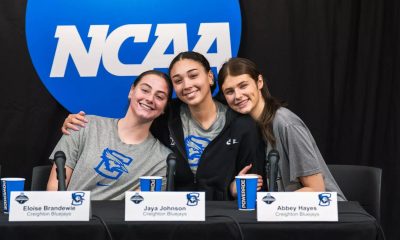
 Sports1 week ago
Sports1 week ago#11 Volleyball Practices, Then Meets Media Prior to #2 Kentucky Match




































